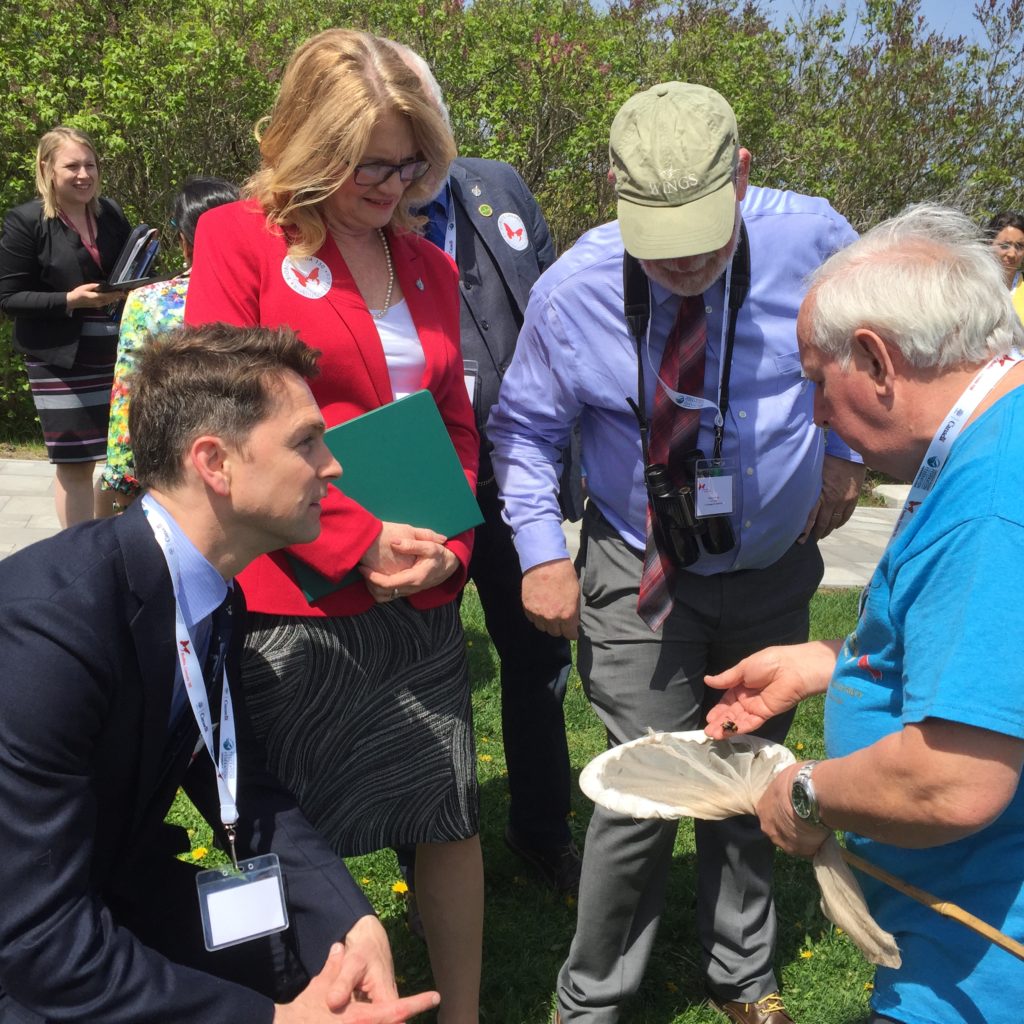How a giant “nature selfie” is tackling a major conservation problem
This article is from the July 2017 issue of Canadian Innovation News. You can read the full issue here.
By Hayley Chazan and Richard Clark
As part of country’s 150th anniversary celebrations, BioBlitz Canada is crowd-sourcing information about species in Canada’s vast and diverse ecosystem
On Canada’s 150th birthday, you might expect that experts have discovered pretty much all the species that roam the vast country. But according to James Pagé, the Canadian Wildlife Federation’s (CWF) species at risk and biodiversity program officer, scientists are aware of only about 50% of the animals, plants, and fungi that inhabit Canada’s diverse ecosystems.
“We know of about 70,000 species in Canada but estimates indicate that there are double that, so about 140,000 all together. That’s 70,000 that we don’t know.”
BioBlitz Canada aims to change that. A signature project featured as part of Canada’s 150th As part of country’s 150th anniversary celebrations, BioBlitz Canada is crowd-sourcing information about species in Canada’s vast and diverse ecosystem anniversary celebrations, BioBlitz turns regular Canadians into ‘citizen scientists’ to help discover new species that scientists haven’t yet catalogued.
“Despite having a lot of good scientists in Canada and a lot of good people out there inventorying things, we actually don’t have a solid handle on all the biodiversity across Canada – it’s a pretty vast country with a lot of area to cover, so experts can’t be everywhere,” explained Pagé.
 Bioblitz Hill launch. MP Will Amos, Parliamentary Secretary for Science Kate Young, MP Richard Cannings, and insectscientist Henri Goulet inspect a COSEWIC-listed pollinator tallied at the Parliament Hill Bioblitz in May. (Photo: Canadian Wildlife Federation)
Bioblitz Hill launch. MP Will Amos, Parliamentary Secretary for Science Kate Young, MP Richard Cannings, and insectscientist Henri Goulet inspect a COSEWIC-listed pollinator tallied at the Parliament Hill Bioblitz in May. (Photo: Canadian Wildlife Federation)
Thirty-five BioBlitz events will happen between April and September 2017. More than 10,000 Canadians and experts will work together to gather species data using a smartphone app called iNaturalist Canada. People will take photos of species ranging from mammals, to insects, to plants that will then be uploaded to a central database. From there, scientists will use the photo timestamp and GPS coordinates, plus notes from the participant, to identify the species.
The CWF has organized five flagship BioBlitz events in urban centers, including Toronto, Vancouver, and Québec City. Ten of the events will target professionals and are located in rarer ecosystems that are more difficult to access. The rest are spread across the county and are focused on citizen scientists, including families with children.
But Pagé says Canadians don’t need to participate in an official BioBlitz to contribute.
“iNaturalist is available anytime of the year so anyone can use it anywhere. It’s about building a big database of species occurrences, which then allows us to answer questions about biodiversity.” Answering these questions is essential to preserving Canadian habitats for the next 150 years. The information will be publicly available for research, tracking global trends, understanding species distribution, monitoring wildlife patterns, and even combatting climate change.
Pagé wants the BioBlitz initiative to continue beyond the Canada 150 celebrations.
“We’re setting the stage for BioBlitz Canada to grow. We’re hoping to establish a snapshot of Canada’s biodiversity at Canada’s 150th birthday. It will provide a baseline of information that we can then use in the future to look back on.”
You can track progress or learn more about this Canada 150 Signature project at BioBlitzCanada.ca. You can also participate by downloading the app at http://inaturalist.ca/

This article is from the July 2017 issue of Canadian Innovation News. You can read the full issue here.
Events For Leaders in
Science, Tech, Innovation, and Policy
Discuss and learn from those in the know at our virtual and in-person events.
See Upcoming Events
You have 0 free articles remaining.
Don't miss out - start your free trial today.
Start your FREE trial Already a member? Log in
By using this website, you agree to our use of cookies. We use cookies to provide you with a great experience and to help our website run effectively in accordance with our Privacy Policy and Terms of Service.





